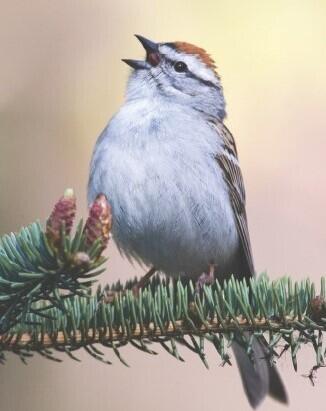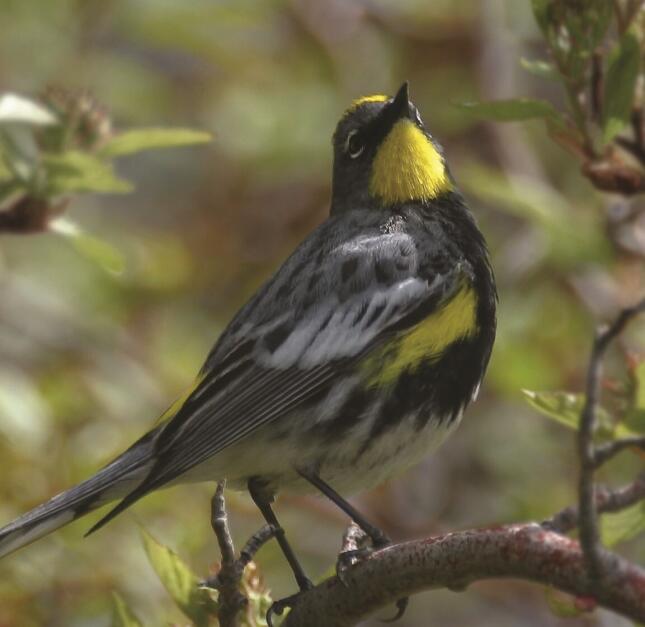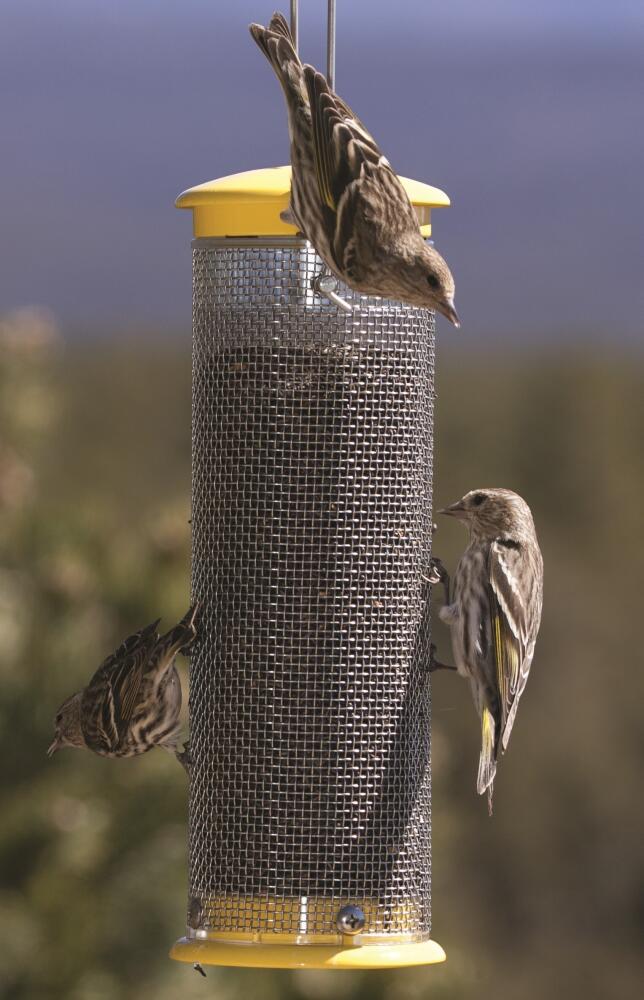October: Migrating Crowds
 In October everyone is on the move. The last of the Orioles and Grosbeaks are moving out, while innumerable Warblers are migrating through in their way to a Mexican vacation. Meanwhile, the winter favorites for Southern California are arriving to stay and keep our cool months lively and full of birdsong..
In October everyone is on the move. The last of the Orioles and Grosbeaks are moving out, while innumerable Warblers are migrating through in their way to a Mexican vacation. Meanwhile, the winter favorites for Southern California are arriving to stay and keep our cool months lively and full of birdsong..
Left: A White-crowned Sparrow enjoys seeds from a feeder as much as those under the bushes (Larry Naylor)
Watch for the first White-Crowned Sparrows with their bold black-and-white-striped heads and orange-ish bills, hopping beneath your bushes, looking for seeds and small insects. Once here, flocks of the White-Crowneds will be regular visitors under your bushes and at your feeders for the entire winter.

Joining the White-Crowned Sparrows are the Chipping Sparrows, who almost match them in showy headgear. The Chippings sport a puffy rust-colored crown, a bright-white eyebrow and a dramatic black line through the eye. They often show up with a crowd, usually on a lawn, sometimes accompanied by pals, such as Dark-eyed Juncos, Yellow-rumped Warblers and Lark Sparrows. Then they flee en masse into the bushes when disturbed.
Right: A Chipping Sparrow sings its heart out
Though they are, indeed, woodpeckers, beautiful Northern Flickers do many un-woodpecker things, such as feeding on the ground as much as in trees. One flock seems to have an affinity for Santa Monica's Tongva Park, bathing in its shallow trickling waterways. Their numbers grow in the fall as migrants join the locals for the winter.
 Also showing up in October are the beloved Yellow-rumped Warblers, one of the harbingers of winter. They will investigate every corner of your garden as they search for bugs of all kinds. They even will probe eucalyptus blossoms for the nectar. If you want to bring them to your garden, be sure to add some live worms to the menu.
Also showing up in October are the beloved Yellow-rumped Warblers, one of the harbingers of winter. They will investigate every corner of your garden as they search for bugs of all kinds. They even will probe eucalyptus blossoms for the nectar. If you want to bring them to your garden, be sure to add some live worms to the menu.
Left: A Yellow-rumped Warbler wants worms
Tall stately Sandhill Cranes are natives of the vast central Plains, but winter gives Californians a chance to see them here, in a few choice locations, notably the Salton Sea and Carrizo Plain. Both locations provide the shallow marshes and meadows that can sustain the cranes through the cold months.
If you see an unfamiliar small grayish bird at your Goldfinch feeder, chances are it's a Goldfinch cousin, the Pine Siskin. Black and gray with a few streaks of yellow on their wings and around their eyes, they crowd your nyjer feeders looking for their favorite food. Every few years, huge flocks move to the coastal lowlands in October for reasons unknown and hard to predict, though a few show up most winters. They not only love the nyjer, but also sunflower chips mixed into the thistle.
Below: Pine Siskins crowd a nyjer feeder

The Orionids, peaking Oct. 21-22, are your last chance to watch for shooting stars while the nights still are relatively mild. The new moon that night will set early and not interfere with viewing.
Rare-bird sightings by LA Audubon:
--A Pacific Golden-Plover along lower Ballona Creek was reported through September. Also threr was a flock of Black-bellied Plovers along the creek or on the salt pan, just upstream from the Pacific Ave. bridge.
--An American Bittern continued at the Ballona Freshwater Marsh through September.
--A Semipalmated Sandpiper was along Ballona Creek between the Centinela and Inglewood crossings early in September.
Elephant Seals appear on the CA coast north of Hearst Castle.

